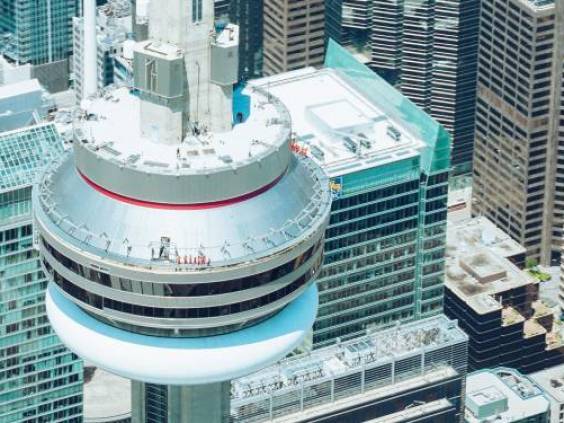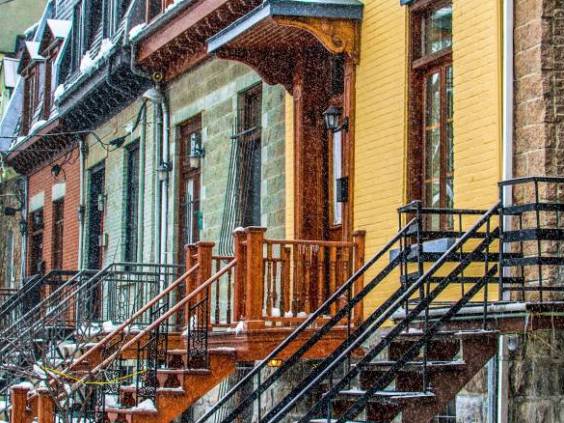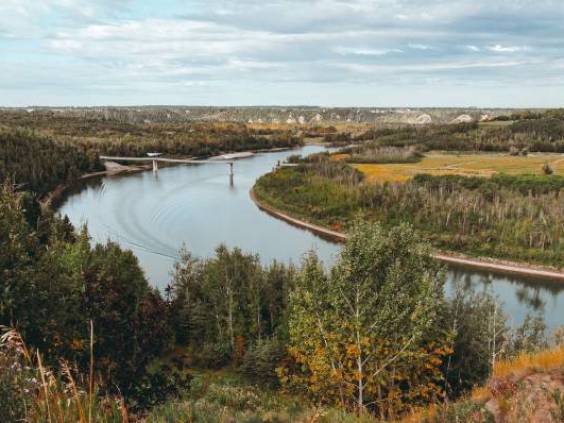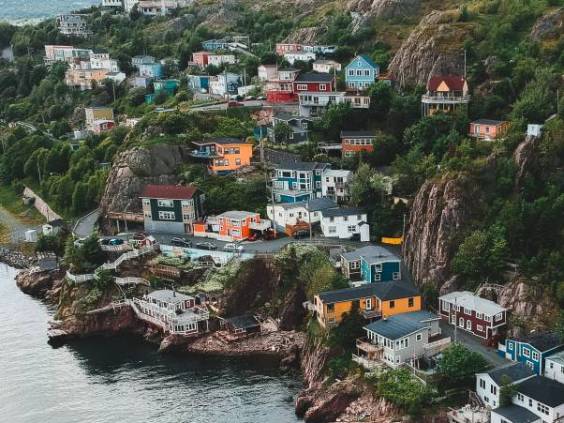Article content
This article was created by MoneyWise. Postmedia and MoneyWise may earn an affiliate commission through links on this page.
| M | T | W | T | F | S | S |
|---|---|---|---|---|---|---|
| 1 | 2 | 3 | 4 | |||
| 5 | 6 | 7 | 8 | 9 | 10 | 11 |
| 12 | 13 | 14 | 15 | 16 | 17 | 18 |
| 19 | 20 | 21 | 22 | 23 | 24 | 25 |
| 26 | 27 | 28 | 29 | 30 | 31 | |
Copyright mortgede 2026 | Theme by ThemeinProgress | Proudly powered by WordPress
Table of Contents
ToggleSales cooled in July, but prices remain on a worrying upward trajectory
Author of the article:

This article was created by MoneyWise. Postmedia and MoneyWise may earn an affiliate commission through links on this page.
This advertisement has not loaded yet, but your article continues below.
Home sales in Canada declined significantly in July, according to the Canadian Real Estate Association’s latest monthly data.
It’s encouraging news for frustrated buyers hoping they’ll have more luck in a less competitive housing market. But with inventory evaporating and prices still growing at a rate well above what’s been seen over the past 15 years, the barriers preventing buyers from entering the market are still largely unassailable.
Let’s take a look at what unquenchable demand, tight supply and rock-bottom mortgage rates did to Canadian real estate in July.

SuperOhMo / Twenty20
On a national level, July home sales were down 15.2 per cent from a year ago, CREA reported Monday. It’s quite a reversal after June when sales rose 13.6 per cent year over year. But July 2020 was a record-smashing month and last month still ranks as the second-busiest July on record.
This advertisement has not loaded yet, but your article continues below.
“The slowdown we’ve seen in home sales over the last few months has not been surprising, given that the level of activity we were seeing back in March was unsustainable,” said Shaun Cathcart, CREA’s Senior Economist. “The problem of high housing demand amid low supply has not gone anywhere — it’s arguably worse.”
CREA reported the number of newly listed homes fell 8.8 per cent from June to July, led by decreasing inventory in some of the country’s most in-demand locales: Montreal, Vancouver, Calgary and the Greater Toronto Area (GTA). New supply dropped in “about three-quarters of all markets in July,” the Association said.
The shrinking number of homes had a predictable effect on prices. July’s national average sale price of just over $679,000 was 25.9 per cent higher than it was a year ago. CREA says that removing Greater Vancouver and GTA sales from the calculation would result in a national average of around $545,000.
This advertisement has not loaded yet, but your article continues below.
The price growth being seen in Canadian real estate, as common as it has become over the past year, is highly abnormal. Between January 2006 and July 2021, there have been only 10 months where year-over-year price growth has topped 15 per cent. Six of those have been in 2021.

Maarten van den Heuvel / Unsplash
Home sales in Ontario came in 5.8 per cent above the 10-year average for July. Year-to-date, sales in the province are a blazing 49.6 per cent higher than in the first seven months of last year.
Ontario’s inventory situation is inarguably brutal. New listings were down 22.2 per cent compared to July 2020, while active listings fell by 32 per cent.
It’s reasonably fair to assume a decrease in inventory, and not demand is causing the dip in sales activity. Luke-warm buyers would not be driving the following year-over-year price increases:
This advertisement has not loaded yet, but your article continues below.

Nathan Shurr / Unsplash
The situation facing B.C. buyers is worsening, but at a slightly slower pace in some local markets.
The average residential price was $891,687 in July, 17.1 per cent higher than a year ago, according to the British Columbia Real Estate Association. Inventory remains a concern, with active listings falling 32.2 per cent year-over-year.
This advertisement has not loaded yet, but your article continues below.
Prices in two of the province’s most in-demand markets rose somewhat modestly, with the average price growing by “only” 10.4 per cent in Greater Vancouver, bringing it to just over $1.15 million, and 8.2 per cent in Victoria, where it crossed $883,000.
Prices are flying elsewhere, though. Chilliwack, Kamloops, the Kootenay Region, the B.C. Interior and Vancouver Island all saw average prices increase by more than 20 per cent.
Keeping up with the increases going forward won’t be easy. If owning a home in B.C. is the goal, it might be time to consider finding a higher-paying job.

jess.k.marchand / Twenty20
Limited supply is also a drag on Quebec’s real estate activity.
With active listings down 33 per cent year over year and new listings falling by 29 per cent over the same period, sales in the province plummeted by 32 per cent in July. Prices, however, shot up across much of the province.
This advertisement has not loaded yet, but your article continues below.
In Quebec City, the benchmark price of homes sold rose by 12.9 per cent to $292,200. Across the Montreal region, the benchmark price rose by 23.4% and is now threatening to cross the $500,000 threshold.
Prices grew even faster in Gatineau, where a 29.1 per cent annual increase saw the benchmark price hit $420,714.

Darby P. / Unsplash
Alberta wrapped up a July that saw it behaving like a model real estate market. Bucking the national trend, sales rose by 10.2 per cent versus July 2020. The provincial average price rose 7 per cent to a hair above $426,000.
There’s still a lot of value on offer in Alberta. The median price in Calgary was only $438,000 in July. In the province’s six other real estate boards, it was under $393,000.
This advertisement has not loaded yet, but your article continues below.
Saskatchewan’s market continues to distance itself from the doldrums it experienced between 2015 and 2020, with year-to-date sales chugging along at record levels.
The province’s benchmark price rose 7.5 per cent in July, driven by a near-6 per cent increase in Regina, where the benchmark came in at $262,800, and Saskatoon, where an 8.6 per cent rise saw it hit $331,400.
In Manitoba, Winnipeg’s real estate activity typically tells the provincial story. Sales in the capital were down 12 per cent in July, but are up 36 per cent year to date versus the same period last year. At $395,576, the average detached sale price in Winnipeg was 7 per cent higher than it was a year ago.
Prices rose a similar 7.7 per cent in Brandon, the province’s second-largest city, but fell by almost 3 per cent in Portage La Prairie, it’s fifth-largest.
This advertisement has not loaded yet, but your article continues below.

Erik Mclean / Unsplash
Not to be outdone by their more populous counterparts, Canada’s eastern provinces continued attracting buyers in droves.
New Brunswick’s market is on fire. July sales were 11.5 per cent above the five-year average for the month, while year-to-date sales are 40.8 per cent higher than a year ago. The average price for single-family homes, $254,500, rose by 32 per cent year over year, while those of townhouses and apartments increased by 24 per cent and 30.4 per cent respectively.
Prices are ballooning in Nova Scotia, too. The benchmark price in Halifax-Dartmouth for July, $452,285, was 23 per cent higher than it was a year ago. The situation is even more intense in the remote Annapolis Valley, where the benchmark price rose by 35.5 per cent to $293,503. Cape Breton, Yarmouth and the South Shore, not exactly Canada’s most densely populated areas, all saw benchmark prices increase by between 18.2 per cent and 27.1 per cent year over year.
This advertisement has not loaded yet, but your article continues below.
It’s a bit of a mixed bag in Prince Edward Island, where sales activity not only fell off a cliff compared to July 2020, but came in below both the five- and 10-year averages for the month. Buyers, however, are still being pressured to pay high prices. The average price of homes sold in July was $369,838, 33.6 per cent higher than a year before and a new record.
Newfoundland and Labrador just had its best month on record. Sales in July were 37.5 per cent higher than a year before. Year to date, sales in the province are an incredible 79.8 per cent higher than they were in the first seven months of 2021.
Newfoundland is still home to some of the country’s cheapest real estate. After rising by 11.7 per cent, the benchmark price for single-family homes in the province is still only $318,000 — for now. Both active and new listings are at their lowest levels in more than five years.
This article was created by Wise Publishing. Wise is devoted to providing information that helps readers navigate the complex landscape of personal finance. Wise only partners with brands it trusts and believes may be helpful to the reader. This article provides information only and should not be construed as advice. It is provided without warranty of any kind.
This advertisement has not loaded yet, but your article continues below.

Sign up to receive daily headline news from the Montreal Gazette, a division of Postmedia Network Inc.
A welcome email is on its way. If you don’t see it, please check your junk folder.
The next issue of Montreal Gazette Headline News will soon be in your inbox.
We encountered an issue signing you up. Please try again
WhatsApp us
